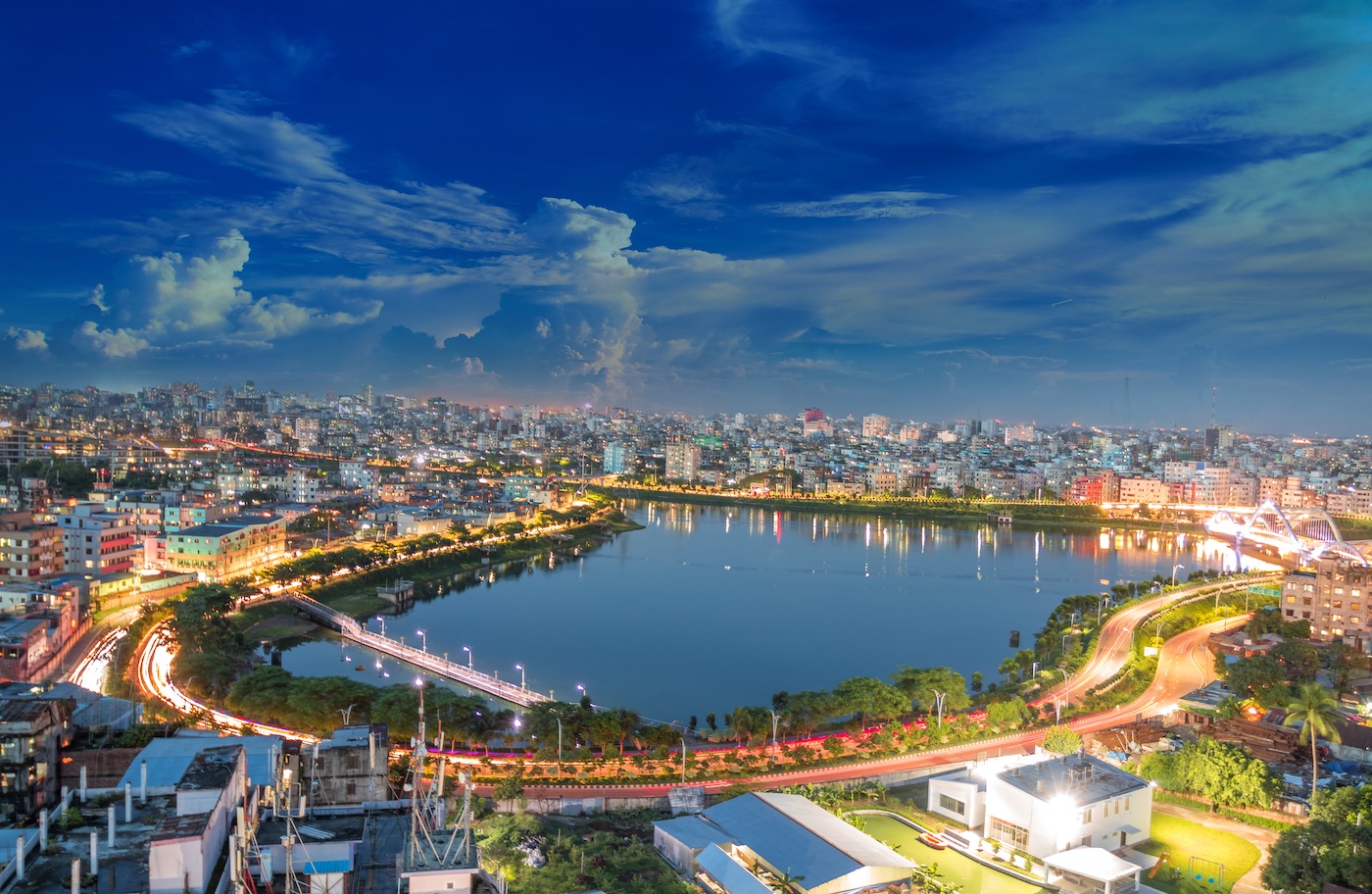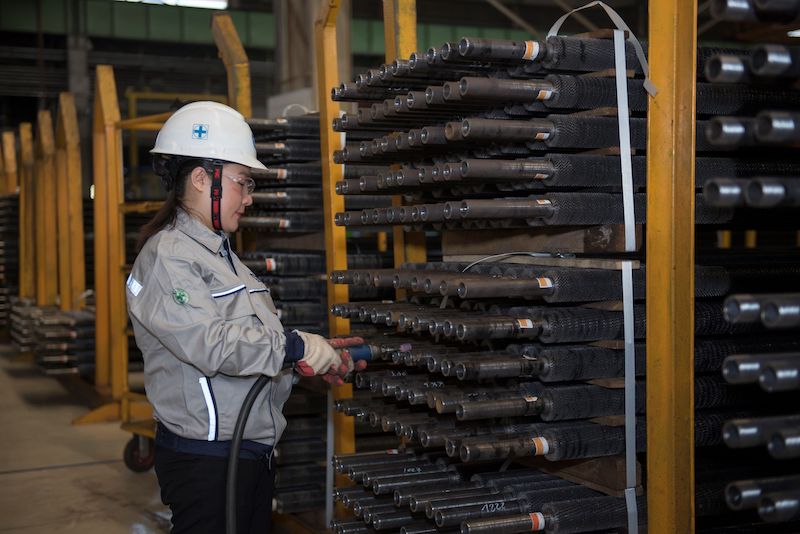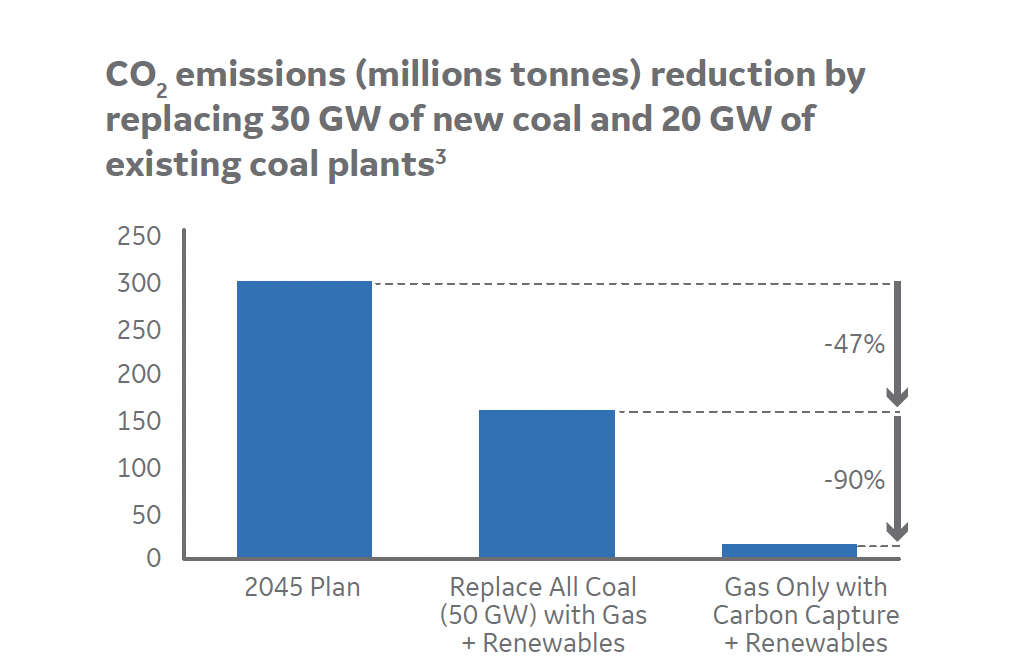Like many emerging economies, Bangladesh and Vietnam share a thirst for electricity. Powered by rapid economic growth, the former expects demand for electricity to jump 250% by 2040, while the latter will see more than a doubling of its demand in a decade, increases that dwarf the typical annual changes in advanced economies like the U.S. Both countries share something else in common: Despite being small contributors to worldwide greenhouse gas emissions, each nation sees climate change as a threat to its population and prosperity.
Both nations’ energy sectors rely on fossil fuels, and their power grids experience reliability issues, leading to periodic blackouts. Rapidly scaling up renewables like wind and solar would hold down emissions, to be sure, but they would need to be added to a grid that is first durable enough to handle these variable power sources that can impact the stability of the grid.
This is the “trilemma” Vietnam and Bangladesh (and many other developing nations) face: how to provide electricity for its people’s growing needs, improve the reliability of infrastructure, and keep planet-warming emissions at bay simultaneously. The answer, argues GE Chief Sustainability Officer Roger Martella, is a balanced approach that leverages high-efficiency gas turbines to build up power capacity, stabilizes the grid with physical and digital upgrades, and prepares for a lower-carbon future using renewables as well as emerging technologies like hydrogen fuel and carbon capture and storage.
“Emerging economies increasingly are at the center of solving for climate change and ensuring a successful energy transition,” Martella wrote last year. “They are already feeling the impacts of climate change and taking steps to protect their people. And they want and should be invested in being part of the innovation to lead a just transition.”
Bangladesh: Rushing to Power a Growing Nation
As an example of the balancing act developing economies face, look toward Bangladesh, says Deepesh Nanda, CEO of GE Gas Power for South Asia. Bangladeshi power capacity is relatively low, given the size of its population (around 166 million, the world’s eighth largest). In response, the government has put forward ambitious plans to ramp up power production, including a massive increase in coal, to as much as 20 gigawatts (GW) by 2041 from next to nothing in 2019, when plans were formalized. That would mean that, despite contributing a minuscule 0.4% to global greenhouse gas emissions in 2019, Bangladesh’s economic and electricity growth would soon send much more CO2 into the air.
Fast-growing countries like Bangladesh are not immune to climate change concerns. The World Bank estimates that by 2050, tropical cyclones could deduct up to a third of the nation’s agricultural earnings and internally displace millions of its citizens. To make matters tougher, Bangladesh has poor geography for wind- and hydropower and little spare land area for solar power. In spite of this, Bangladesh has pledged to cut its emissions by 22% by 2030.
The solution, says Nanda, is to switch from coal to high-efficiency gas power while planning for a lower-carbon future at the same time. Gas has been recognized as an essential tool alongside renewable and grid technologies that can speed the energy transition, because it’s quick to deploy, emits less than half of the carbon emissions of a comparably sized coal plant, and provides an important foundation to enable the growth of renewables on the grid. And as Bangladesh’s power capacity continues to grow, its grid remains less stable than it should be. Advanced gas turbines help to provide cleaner energy than coal and help to stabilize the grid and avoid blackouts, like one that paralyzed much of the nation last October.
“We are transforming the power sector in Bangladesh by adopting more efficient, reliable, and sustainable ways to generate electricity, and we are doing this by collaborating with global power players like GE,” says Muhammed Aziz Khan, chairman of Summit Group, a leading power producer in Bangladesh.

“Deploying gas is frequently the fastest way to reduce emissions at scale while enabling a strong foundation for building renewables and other generation assets,” noted GE’s Martella earlier this year. In addition, GE’s turbines have a pathway to decarbonization in the future; to date, they have run for more than 8 million hours on hydrogen blends, and GE is investing in innovating both hydrogen and carbon capture technology for its turbines.
GE estimates that replacing the planned coal power with natural gas could cut Bangladesh’s forecasted CO2 emissions by 52% by 2041. Carbon capture and storage technologies, still in their early phases, could reduce it further, by as much as 90%. In addition, GE’s latest gas turbines are capable of burning hydrogen in place of gas, as a recent project to replace a coal-fired plant in Australia shows.
“While hydrogen is expensive today, Bangladesh is next to mainland India, and India is investing heavily in hydrogen infrastructure,” says Nanda. “It’s the right time for the government of Bangladesh to start getting the gas turbines designed.”
Burning a mix of gas and hydrogen produced from renewable sources, combined with emerging technology to capture carbon, means that over time today’s gas-burning turbines will reduce emissions further.
GE played a big role in developing Bangladesh’s grid, too, notes Nanda. In 1990, just 8% of Bangladeshis had access to electricity, according to the World Bank. In the late aughts, as the nation was rushing to build out its grid, GE was the only major company willing to bid to be part of the effort, says Nanda, and hired its first workers in the country in 2010. Today it employs or contracts more than 3,000 just in Gas Power, he adds.
Vietnam: Smartly Integrating Renewables
Vietnam faces a broadly similar trilemma but with different characteristics, says Lan Phung, general director of GE Power Vietnam. Coal and hydropower account for the majority of Vietnam’s capacity, and, like Bangladesh, the nation has plans to add more new coal power between now and 2030 to meet growing demand, even as it pledges to cut emissions. Under the current framework, Vietnam will remain reliant on coal before shifting toward renewables like wind and solar while gradually transitioning from coal to other fuels like biomass and ammonia.
That means Vietnam would still add up to 30 GW of coal power between 2030 and 2035, leading to an additional 132 million metric tons of CO2 emissions, according to projections in the latest Power Development Master Plan (PDP). Replacing that planned coal with a combination of natural gas and renewables would cut those emissions by 60%.

But, says Phung, “Vietnam is still a developing country, and power demand growth is still relatively high. Any change in power generation from coal to gas will not be a sudden change. There will be transition time where you still need coal while you build gas. It is a long cycle.”
The PDP’s road map toward net zero in 2050 calls for about 24.5 GW of gas power including LNG by 2030, with a gradual shift to burning hydrogen after 2035, as well as the addition of 19 GW of wind power by 2030, leading to a flurry of construction projects. LNG, or liquified natural gas, is a means of transporting and storing natural gas that allows locations without the resources for domestic natural gas — or the land requirements to support domestic gas production — to utilize this fuel source.
To support the anticipated growth of renewables and provide more reliable power generation, Phung and his team are working on multiple projects to build out highly efficient gas plants powered by GE’s latest HA gas turbine technology. The Nhon Trach 3 and 4 projects, owned by PV Power, are a good example of how gas-fired plants can support the coal-to-gas transition and accelerate adoption of renewables in Vietnam. Once they are in operation (targeted for 2025), they will be the country’s first power plants fueled by LNG and are expected to deliver more than 1.6 GW of electricity.

“The nature of renewable power is unpredictable,” says Phung. With the addition of wind and solar to the power supply, having gas power as a foundational element can help the grid respond quickly to a shortage of sun or fluctuating wind.
GE is also working with Vietnam on its renewable energy goals. Fifteen of GE’s powerful 4-MW turbines will power the Cau Dat Wind Farm, while the company will supply eight 3.8-MW turbines to the TNP Wind Farm in Binh Thuan province. GE has had a presence in Vietnam since 1993, notes Phung, and delivered its first gas turbine to a power plant there 20 years ago. Today, GE operates manufacturing facilities employing thousands in Vietnam, and GE technology is present all across the grid, from hydropower to inverters for solar to turbines in gas and coal plants around the country.
A Question of Cost
In the end, the speed at which nations like Vietnam and Bangladesh transition toward cleaner energy comes down to cost, notes Phung. “It is about the cost of electricity that the consumer, the people of Vietnam, can afford, that the economy can afford,” he says.
Financing support from wealthier nations like the U.S. as well as international organizations will play a key role in bringing down the cost of cleaner power, speeding the transition.
“As the global community takes important action for climate change — which includes placing increasing demands on the grid by electrifying other sectors — we must make the right investments to help ensure everyone has access to the lifeblood services associated with electricity,” said Martella.
For Phung and Nanda, the push to build a modern electrical system that takes into account the need to adapt to a warming world is the culmination of years of investment in understanding these two nations and their people.
To see a proposal on a piece of paper become a working power plant that lights homes and powers businesses makes Nanda feel lucky to be part of it. “Electricity touches human lives,” he says. “That purpose, for me, has been lived time and again.”
